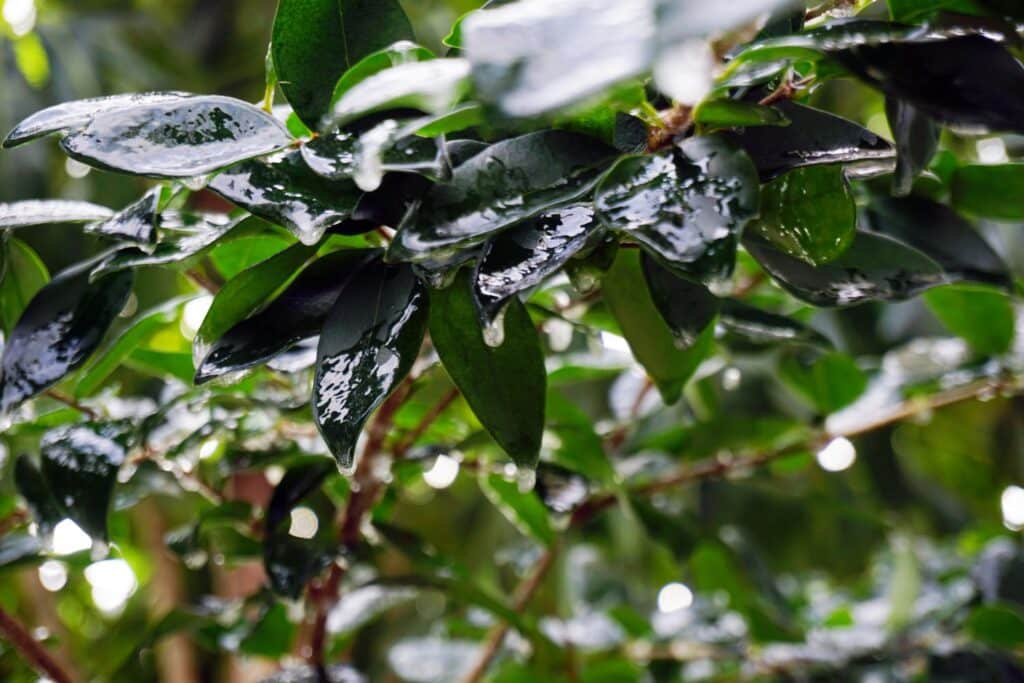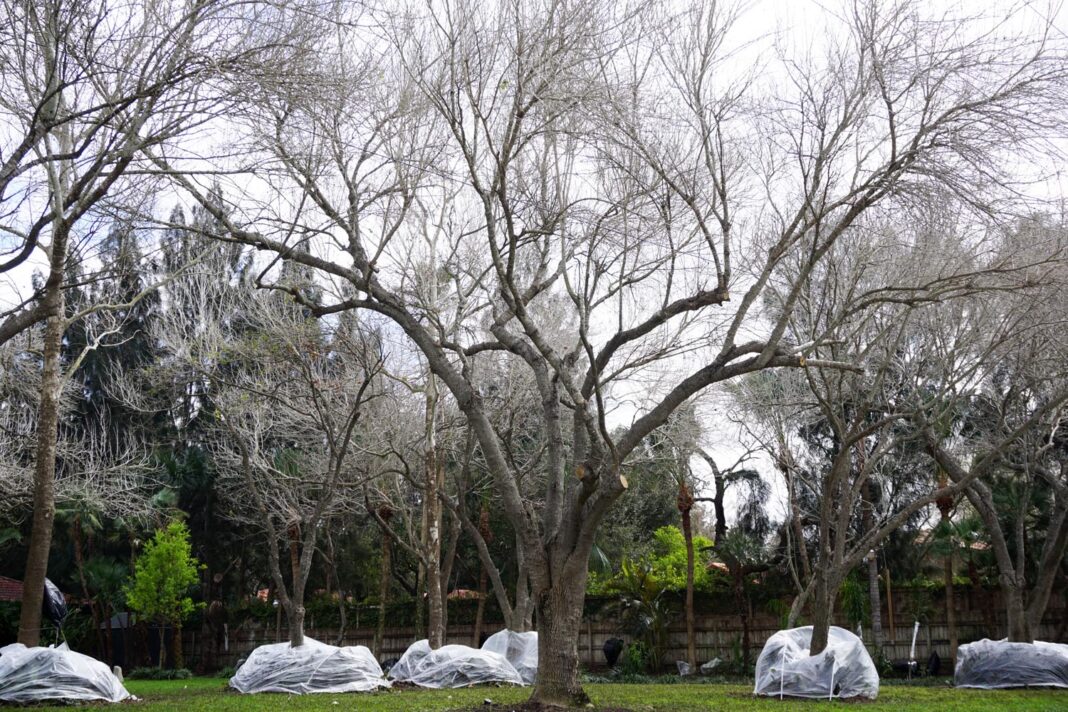By Chuck Malloy, Palm Society of South Texas and Jennifer Herrera, CEA, Cameron County
If you’re like us and have been outside, you can smell the rotting and leaf burn on the vegetation. If you’re one of the many plant lovers of us that have a plethora of plant varieties and you had severe damage to many of your plant children, we empathize with you. This freeze also impacted a lot of our natives.
The following are brief points of interest on how to help revive your plants that still have a chance to survive. Cold preparation by watering heavily, proper nutrition throughout the year, and other care/maintenance will have given your plants an edge to get through the cold.
Here’s what to do now after the freeze. The bullet points below are mainly
for in-ground plants. If you have specific questions, please email:
[email protected] for palm questions, and contact your local AgriLife
Extension Office for other plants/trees.
Palms:
>> PATIENCE: Do not over-react. Nature takes time to heal. Some of these plants will
take months to recover.
>> DON’T PRUNE: As tempting as it may be, DON’T PRUNE. Pruning stimulates new
growth. The plants are stunned, and they need recuperation time. Palms: The dying
fronds are providing insulation, and nutrition is being pulled back into the palm, so wait
until the frond is totally crispy brown and the palm is providing new shoots. Remember,
no cosmetic pruning ever with palms. Plumeria: you do want to find good firm new
wood and prune on them as they get mushy and you need to stay ahead of the mush,
otherwise you’ll just chase the mush to the ground.
>> TREATMENT: Call a local professional nursery/garden center for advice on the
recommended product(s) for your plants. Check your sources and get second opinions.
Some treatments can hurt some of your hibiscus or other plants and may not be proper for
your fruits.
>> DON’T REMOVE PLANT: Don’t forget the patience point! A lot of our plants may
come back from the root system even when all looks lost. Palms: Don’t remove “EVEN
IF” the apical stem has come out. Some may not be totally gone. We have had a queen
palm (Syagrus romanzoffiana) and several Phoenix roebellinii that lost their center
shoots. The queen’s shoot had 18” of black smelly decomposition that broke loose. It
took 3-4 months of watering and when we were just about to cut it down, it sent out a
double shoot. Plumeria: for the most part, if you have to cut it down to the ground, when
the heat returns, it may send multiple shoots up from a stabilized roots system.
>> WATER WATER WATER: Before the freeze, we were already in a drought and still
are. Water is the first band-aid that we can apply. Injured palms need deep watering now
2-3 times a week. Deep watering means using a water hose to fully soak the ground
deeply versus irrigation. Limit watering on plumeria and other succulents.
Tropical and Subtropical Landscape Plants:
>> WATER NEEDS: Plant water needs should be checked after a freeze. Plants may have
lost substantial moisture during a windy advective freeze. Plants will transpire (lose water
vapor) on a sunny day after a freeze, but sometimes their roots are too cold to function
normally. Water in the soil of containerized plants can actually freeze and be unavailable
to roots. Apply water to allow thawing, rehydration of plants, and dilution of fertilizer
salts that might otherwise burn plant roots.
>> PRUNING: Cold injured wood can be identified by lightly scraping the bark with your
fingernail and examining the color of the cambium layer (food conducting tissue) just
underneath. Green tissue indicates the plant is still alive at that point; black or brown
coloration indicates dead or injured tissue. Prune these branches behind the point of
discoloration. Branch tips may be damaged while older wood is free of injury. If in doubt,
delay pruning until new growth appears to ensure that live wood is not removed. Dead,
unsightly leaves may be removed as soon as they turn brown after a freeze. Cold injury
may appear as a lack of spring bud break on a portion or all of the plant, or as an overall
weak appearance. After a particularly harsh cold event, some plants may be very slow to
recover, so some patience is required.

Tropical and Subtropical Fruit Trees:
>> Give plants time, water 1 to 2 inches weekly. DO NOT prune yet.
>> The ability of various subtropical and tropical fruit crops to withstand exposure to
freezing or subfreezing temperatures depends upon their inherent genetics, the depth and
hours of freezing temperatures, and the number of freezing events that occur. In addition,
tree size (age), stage of plant growth (e.g., trees with or without fruit, dormant versus
actively growing), and recent plant stresses (e.g., drought or flooding) influence tree
tolerance and recovery from freezing temperatures. Recent cultural practices (e.g.,
fertilization and pruning) also greatly influence tree reaction to freezing temperatures.
Mature loquat trees, for example, can withstand freezing temperatures to 10°F, and
lychee to ~24°F, but banana and papaya are damaged or killed below ~31°F. Dormant
(quiescent, not actively growing) fruit trees are more freeze tolerant than actively
growing fruit trees.




